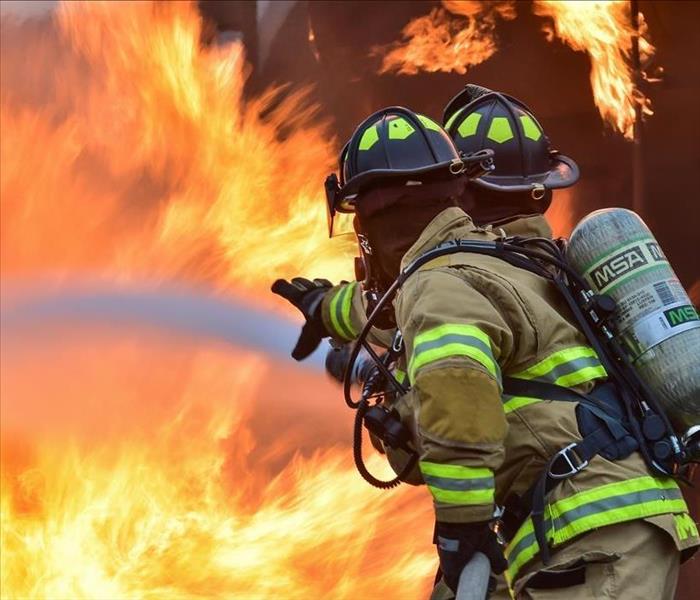How Fire Spreads: What Gets Damaged First?
10/25/2019 (Permalink)
The more carbon monoxide in the air, the harder it is to escape from a fire. When a fire starts, it uses the naturally occurring oxygen in the air to create carbon monoxide. This is because fires add Carbon (C) to the Oxygen (O) which creates Carbon Monoxide (CO). The longer a fire burns, the more carbon monoxide is created until all of the pre-existing oxygen has been used up. It is at this point that the air in a burning building becomes unbreathable, causing any humans in the vicinity to faint and eventually lose function of their lungs.
Fire damage spreads in different ways depending on the source of the fire. Some fires expand due to the large quantity of oxygen molecules that can be consumed. Some spread with the help of grease and oils. It is never recommended to put out a fire yourself, instead call the local fire department for professional assistance. However, in case of an emergency, make sure to deprive the fire of oxygen if possible. For example, if a fire began in the kitchen due to cooking in a pot or pan, you may be able to cease the spread of the fire by placing a lid on top which cuts off the oxygen.
In most situations, the fire spreads quickly enough that it cannot be stopped. Within just minutes of the fire’s ignition, poisonous gases like carbon monoxide are already being emitted into the air. Evacuation is the most important step for safety at this point.
Once you and your family or neighbors have evacuated the building to a safe location, the hot air created by the fire spreads throughout the building and into other rooms. It only takes five minutes for the air to reach temperatures as hot as 400 degrees Fahrenheit. Within such a small time frame, the fire eats away at the structure of the building, which in most cases comprised of wood frames, insulation, and other flammable materials.
Once the fire has been put out by firefighters, what does fire damage look like? Although it depends on the length of time the fire burned, damage can be done regardless of where the fire spread. Even in rooms untouched by fire, hot air could still have traveled through the entire house, melting anything plastic or glass. Even wood beams that are still standing can be a danger because they have still been weakened. Soot sticks to floors, ceilings, and walls, and still contain dangerous byproducts of anything burned despite the fire being over.
Remember to talk to your fire department after the fact about the safety hazards of reentering the building. No matter how bad the damage may be, whether is extends just above the oven or within the entire structure of the building, contact a professional fire damage specialist to remove the fire damage.
Fire damage specialists have the necessary materials, including safety gear, to rid the home of toxins and restore the integrity of the internal structure. SERVPRO of East Dayton arrives promptly and charges affordably, so that life can return to normal just as quickly as the fire spread.



 24/7 Emergency Service
24/7 Emergency Service